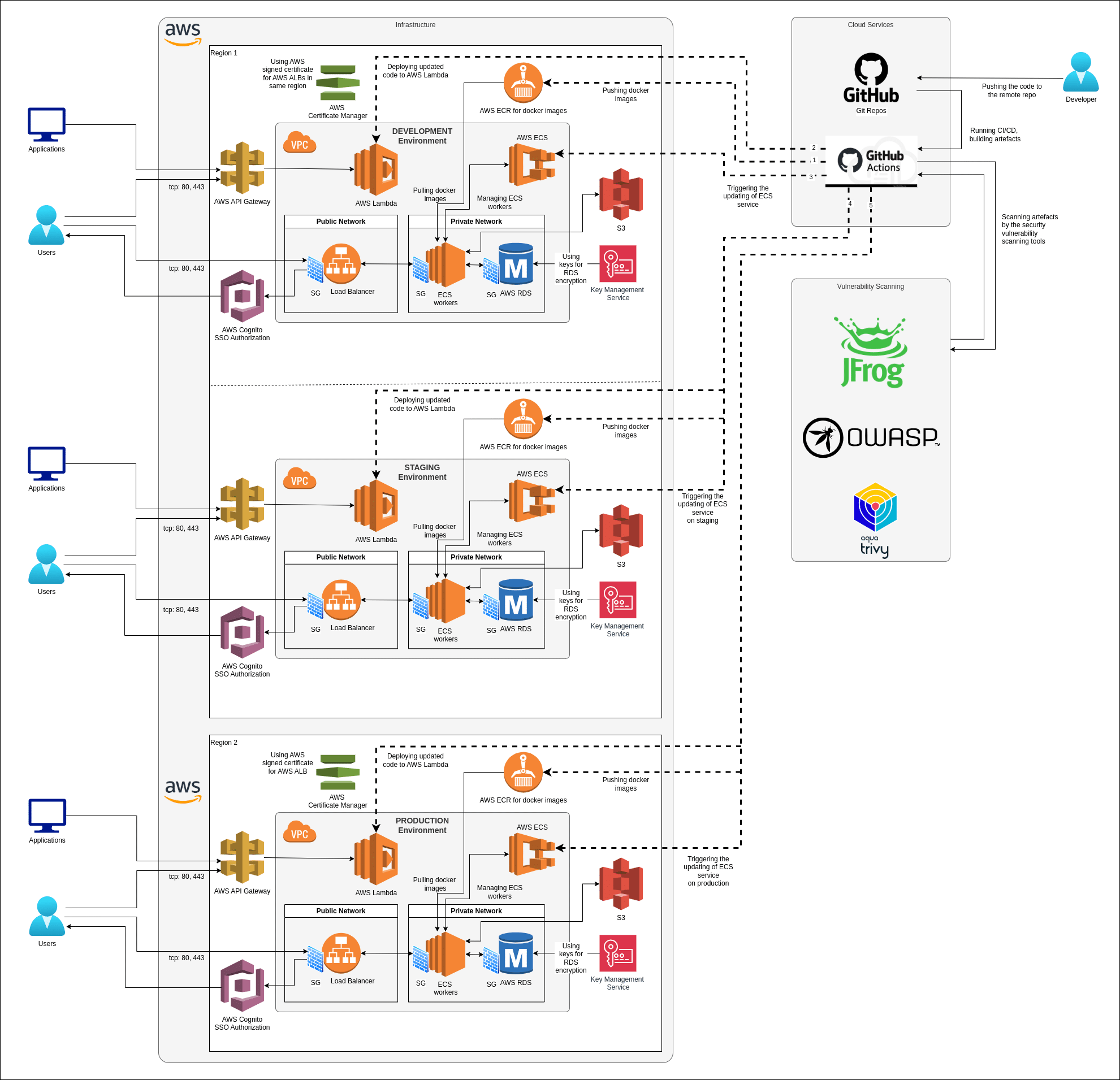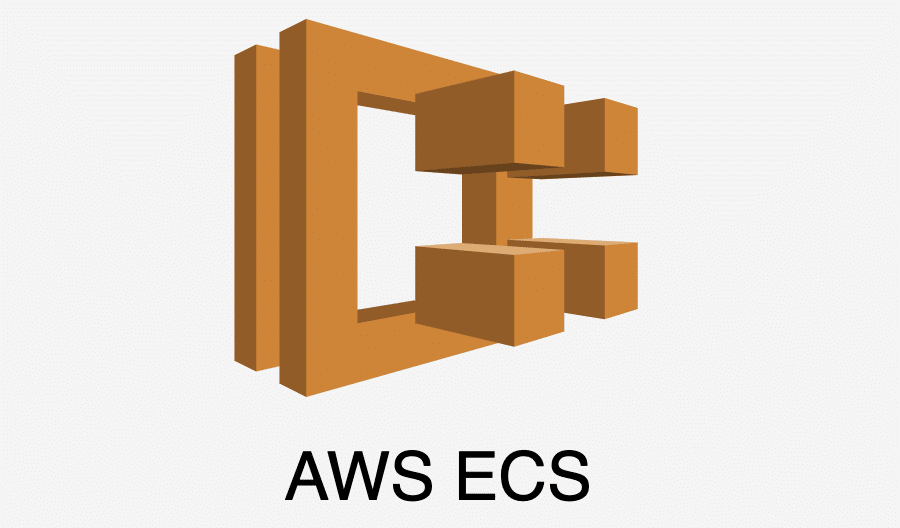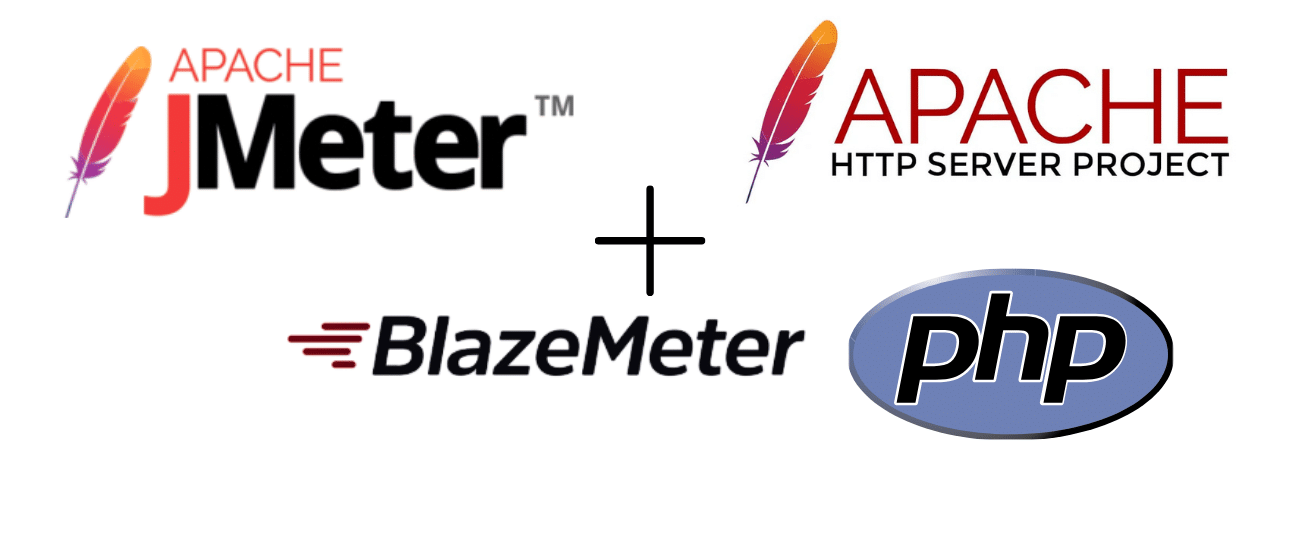The provided diagram illustrates three similar environments: development, staging, and production. Development and staging are hosted in the same AWS region, while production can optionally be deployed in a region of choice.

The infrastructure includes the following components:
- AWS ECS (or optionally AWS Elastic Beanstalk) for application orchestration.
- AWS RDS for relational database management.
- AWS S3 for object storage.
- AWS Certificate Manager (ACM), with a shared certificate for one region.
- API Gateway integrated with AWS Lambda for serverless backend logic.
- AWS Key Management Service (KMS) to manage encryption keys, such as the key for encrypting the AWS RDS instance’s disk.
- AWS Cognito for centralized user authentication in one region, integrated with AWS Application Load Balancer. When an unauthenticated user requests access, the load balancer redirects them to Cognito, which issues a session token. This token is recognized by the load balancer, which then grants or denies access to the application running on AWS ECS.
- AWS ECR serves as a repository for Docker images used to deploy applications on AWS ECS.
Deployment Workflow
Developers push code to the appropriate branch in the repository. The CI/CD pipeline, in this case GitHub Actions, detects changes and initiates artifact preparation. The preparation involves:
- Building Docker images.
- Scanning for vulnerabilities using GitHub’s native GHAS tools and third-party scanners (e.g., JFrog, Trivy, OWASP, and optionally ClamAV for virus scanning).
Once all checks pass, deployment to the development environment begins:
- Pushing Docker images to AWS ECR.
- Redeploying AWS Lambda functions.
- Triggering updates for AWS ECS services.
If the application launches successfully, AWS ECS terminates old instances, ensuring a level of fault tolerance during deployments of potentially faulty artifacts.
Staging and Production Environments
- Staging mirrors the development environment, with deployment triggered from a specific branch in GitHub Actions.
- Production is also similar, with deployment triggered from a designated branch or release in GitHub.
Infrastructure Management
The application is primarily managed via AWS ECS, a native AWS solution known for its stability and deep integration with other AWS services. As alternatives:
- AWS Elastic Beanstalk provides a simpler solution.
- AWS EKS offers greater flexibility, enabling seamless migration between cloud providers or deployment on on-premises servers when needed.
CI/CD Tools
We utilize various CI/CD solutions, including GitHub Actions, GitLab CI/CD, Jenkins, Bitbucket Pipelines, and others.


